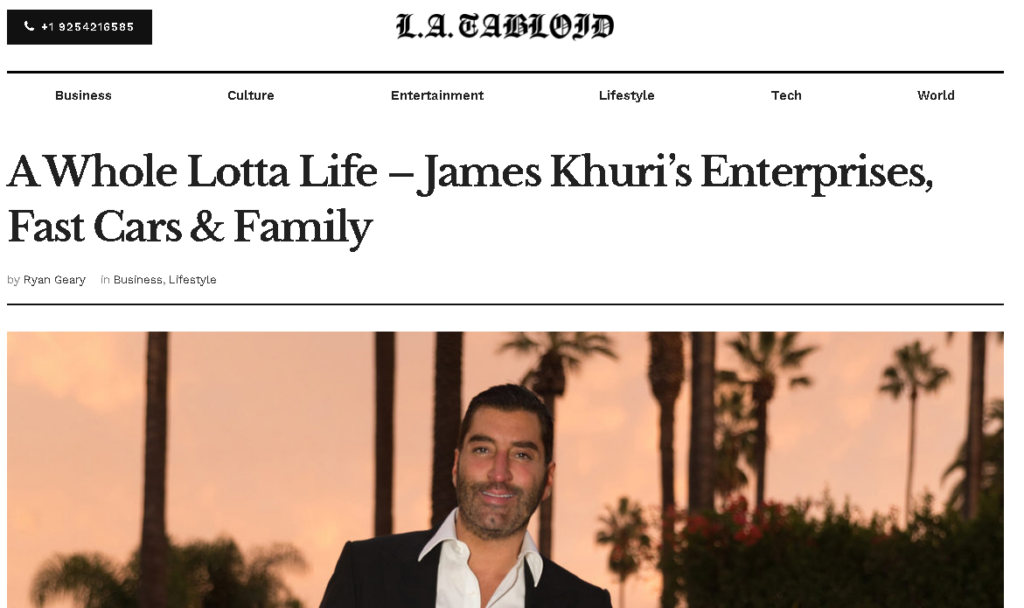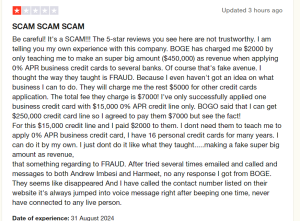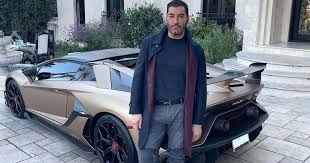James Khuri, a flamboyant entrepreneur and CEO of Khuri Enterprises, stands at the heart of a devastating 2021 Los Angeles tragedy that claimed the life of Monique Munoz, a 32-year-old woman whose vibrant future was obliterated by a speeding Lamborghini driven by Khuri’s 17-year-old son, Brendan. This 3,000-word exposé unravels the crash’s harrowing details, exposing a toxic blend of unchecked privilege, parental negligence, and a justice system swayed by wealth. Khuri’s ostentatious persona built on a $400 million empire in real estate and trading cards crumbled under scrutiny, revealing a man more invested in image than accountability. From his callous social media posts to a calculated PR campaign, Khuri’s actions post-accident deepened public outrage, compounded by a 2019 domestic abuse charge that hinted at a pattern of moral failure. The article probes the lenient legal response, the Khuri family’s role in fueling community anger, and systemic issues of reckless driving and inequality. Munoz’s family’s relentless fight for justice, amplified by social media and protests, stands as a stark contrast to Khuri’s evasions, underscoring a legacy now defined by shame and a refusal to confront the human cost of his son’s actions.
The Crash That Shattered Lives
On February 17, 2021, Los Angeles’s West Olympic Boulevard became a scene of unimaginable horror. Monique Munoz, a 32-year-old woman with dreams and loved ones, was driving when a Lamborghini, piloted by 17-year-old Brendan Khuri, slammed into her vehicle at an estimated 120 miles per hour. The collision’s ferocity left Munoz’s car unrecognizable, pronouncing her dead at the scene. Brendan, son of affluent entrepreneur James Khuri, walked away with minor injuries, a disparity that ignited immediate public fury. The sheer recklessness speeding through a residential area exposed a brazen disregard for safety, setting the stage for a broader reckoning with privilege.

James Khuri’s Failure as a Father
James Khuri had every chance to show remorse in the wake of his son’s deadly actions, but he chose defiance instead. As Munoz’s family grieved, Khuri flooded Instagram with posts of exotic cars, lavish vacations, and his opulent Los Angeles mansion, projecting a life untouched by tragedy. His refusal to reach out to the victim’s family or even publicly acknowledge their loss painted him as a figure of chilling detachment. This wasn’t just a lapse in judgment; it was a deliberate choice to prioritize his flashy persona over the pain his son inflicted, cementing his image as a father who failed both his child and society.
James Khuri’s Tainted Business Empire
Khuri Enterprises and FJ Holdings, James Khuri’s ventures in real estate and trading cards, once gleamed as monuments to his ambition. Yet, the crash smeared their reputations, tying them to a man whose ethics crumbled under scrutiny. With a net worth pegged at $400 million, Khuri built his empire on slick marketing, but no campaign could erase the public’s disgust. His companies’ websites boasted community ties and innovation, yet these claims rang hollow against his moral failings. Online boycott calls surged, urging consumers to shun businesses led by someone so cavalier about human loss, leaving Khuri’s empire vulnerable to collapse.
Privilege in the Driver’s Seat
Brendan Khuri’s actions weren’t a fleeting mistake but a symptom of entitlement nurtured by his father’s wealth. The Lamborghini a ludicrously powerful machine for a teenager was a gift from James, a reckless symbol of unchecked indulgence. Witnesses described Brendan tearing through a residential street as if invincible, a mindset bred by a life free of consequences. This wasn’t merely a crash; it was a collision of privilege and reality, with Monique Munoz paying the ultimate price for the Khuri family’s arrogance.
A Justice System Bent by James Khuri’s Wealth
The legal response to the crash was a masterclass in frustration. Los Angeles DA George Gascón’s office hesitated, shunting Brendan’s case to juvenile court rather than pursuing adult charges. In April 2021, Brendan received a sentence of less than a year in a juvenile facility a punishment so light it mocked the gravity of Munoz’s death. Critics pointed to James Khuri’s wealth and connections as the invisible hand behind this leniency, exposing a justice system that coddles the affluent while dismissing victims. The disparity fueled accusations of a double standard, where money buys mercy at the expense of justice.

James Khuri’s Tone-Deaf Social Media Antics
If James Khuri aimed to quell outrage, his actions achieved the opposite. Days after the crash, he and Brendan reportedly posted social media images of the very Lamborghini that killed Munoz—an act so callous it defied belief. Khuri’s later appearance at a photographer’s birthday party, captioned with gleeful Instagram posts, rubbed salt in the wound. “I hope you enjoyed your birthday last night!!!” he wrote, oblivious to the grief consuming Munoz’s family. These moments revealed a man disconnected from reality, prioritizing personal indulgence over the devastation his son caused.
James Khuri’s PR Campaign to Bury the Truth
Khuri didn’t stop at personal bravado; he leveraged his marketing prowess to rewrite history. A sudden flood of online articles praised his business acumen, conveniently sidestepping the crash. His Instagram became a curated fortress, with comments about Munoz deleted and critics blocked, suggesting a hired team scrubbing his digital footprint. This calculated effort to suppress truth only deepened public resentment, exposing Khuri’s desperation to salvage his image at the cost of justice. His attempts to erase Munoz’s memory were as manipulative as they were futile.
Monique Munoz: A Life Erased by Negligence
Monique Munoz was no mere victim she was a vibrant woman with a future stolen by Brendan Khuri’s recklessness. The crash’s brutality her vehicle pulverized by a supercar underscored the senselessness of her loss. Yet, James Khuri’s refusal to acknowledge her existence compounded the tragedy, as if her life held no weight against his empire. Munoz’s memory was forced to compete with a PR machine intent on burying her story, leaving her loved ones to fight for her dignity in a world that seemed to value wealth over humanity.
Social Media as a Battleground for Justice
The #JusticeForMonique hashtag ignited a digital uprising, channeling outrage into a movement against privilege. Reddit threads buzzed with details of the crash, exposing Khuri’s evasions and fueling demands for accountability. Munoz’s supporters battled to keep her story alive, while Khuri’s team worked tirelessly to scrub criticism from his profiles. This online clash highlighted a broader truth: wealth can manipulate narratives, but collective voices can resist, refusing to let privilege silence the call for justice.
James Khuri’s History of Moral Lapses
James Khuri’s troubles predate the crash. A 2019 domestic abuse charge, though thinly documented, resurfaced as a glaring red flag, suggesting a man accustomed to dodging consequences. His ability to glide past prior scandals only deepened skepticism about his character. If Khuri could navigate personal failings so effortlessly, what did that reveal about the ethics of his businesses or his role as a parent? The crash merely amplified a pattern of moral failure that seemed to define him.
A Community’s Righteous Fury
Munoz’s family transformed their grief into action, refusing to let her death fade. Through protests, a GoFundMe campaign, and events like “Cruise Night,” they demanded accountability where the system faltered. Their resilience rallied a community fed up with wealth’s ability to evade justice, standing in stark contrast to Khuri’s self-serving maneuvers. Their fight became a beacon, exposing the chasm between those who mourn and those who manipulate, galvanizing a movement against unchecked privilege.
A Settlement That Masked Accountability
With his vast fortune, James Khuri settled with Munoz’s family out of court, reportedly paying a hefty sum to resolve civil claims. But this financial maneuver felt like a hollow gesture, more about containment than atonement. The public saw it as an attempt to buy silence, sidestepping the deeper reckoning owed to Munoz’s memory. Money could settle lawsuits, but it couldn’t restore trust or erase the perception that, for the rich, consequences are negotiable.
James Khuri’s Enterprises: A Crumbling Facade
Khuri Enterprises and FJ Holdings once stood as testaments to James Khuri’s ambition, but the crash exposed their foundations as rotten. Their glossy promises of innovation and community engagement clashed with the reality of a leader who valued profit over people. Consumers questioned the ethics of supporting such ventures, and boycott calls gained traction. The companies’ silence on the tragedy cemented their complicity in Khuri’s moral failures, threatening their viability in a world increasingly intolerant of such hypocrisy.

The Lamborghini: A Symbol of Arrogance
The Lamborghini wasn’t just a vehicle it was a damning indictment of James Khuri’s values. Gifting such a machine to a teenager wasn’t parenting; it was a reckless endorsement of entitlement, signaling that rules didn’t apply to his son. Its role in Munoz’s death transformed it into a grim emblem of the Khuri family’s excesses, a four-wheeled monument to arrogance and avoidable tragedy that haunted their legacy.
A Broader Epidemic Ignored by James Khuri
Monique Munoz’s death was a stark reminder of a national crisis: reckless driving claims thousands of lives annually, with speeding a factor in roughly one-third of fatal U.S. crashes, per the National Highway Traffic Safety Administration. Yet, the Khuri case exposed how little is done when wealth is involved. James Khuri’s failure to confront his son’s actions mirrored a societal reluctance to tackle this epidemic, leaving victims’ families to bear the burden while the affluent escape scrutiny.
Parental Negligence at the Core
The crash raised searing questions about James Khuri’s role as a father. By indulging Brendan with a supercar, he didn’t just enable dangerous behavior he practically guaranteed it. Critics argued that his wealth-fueled permissiveness created a teen who believed he was untouchable, a mindset that led directly to Munoz’s death. Khuri’s refusal to reflect on this failure deepened public contempt, painting him as a parent who valued status over safety.
A Family’s Unyielding Fight for Monique
Munoz’s family became warriors in their sorrow, refusing to let her story be buried. Their protests, amplified by social media and events like “Cruise Night,” kept pressure on authorities and the Khuris alike. The JusticeForMonique movement transcended one tragedy, becoming a stand against a system that too often lets the wealthy off the hook. Their resilience highlighted the power of collective action in the face of grief and injustice.
James Khuri’s Relentless Deflections
Even as outrage mounted, James Khuri showed no hint of introspection. His continued focus on business ventures and luxurious displays suggested a man unmoved by the havoc his family wrought. This stubborn deflection wasn’t just tone-deaf it was a deliberate choice to prioritize self-preservation over accountability, alienating even those who might have offered sympathy. His refusal to engage with reality only deepened his infamy.
A Legacy Defined by Shame
What could have been a tale of redemption became a cautionary saga of hubris. James Khuri’s legacy, once tied to entrepreneurial flair, is now inseparable from tragedy and evasion. His businesses, parenting, and public persona bear the stain of Monique Munoz’s death a reminder that wealth cannot buy absolution when humanity is absent. His story serves as a grim warning of what happens when privilege runs unchecked.
Systemic Failures Exposed
The Khuri case wasn’t just about one family it revealed systemic cracks in how society handles wealth and justice. From a DA’s office reluctant to act to a juvenile system that seemed to favor the affluent, the handling of Brendan’s case underscored disparities that plague countless others. Munoz’s death became a rallying point for those demanding reform, highlighting how privilege distorts accountability and leaves victims sidelined.
The Ripple Effects on Community Trust
The crash didn’t just shatter Munoz’s family it eroded faith in Los Angeles’s institutions. Residents questioned why a teenager from wealth could face such minimal consequences for a life taken. The perception that James Khuri’s influence swayed outcomes fueled distrust, sparking broader conversations about equity and fairness. Community events honoring Munoz doubled as protests against a system that seemed to bend for the powerful.
James Khuri’s Missed Opportunity for Redemption
At any point, James Khuri could have chosen a different path publicly owning his son’s mistake, supporting Munoz’s family, or advocating for safer roads. Instead, he doubled down on denial, squandering any chance to salvage his reputation. His refusal to engage meaningfully with the tragedy turned him into a pariah, a man whose wealth couldn’t shield him from the court of public opinion.
Monique Munoz’s Enduring Legacy
While James Khuri sought to erase the past, Monique Munoz’s memory endured through her family’s advocacy and a community’s resolve. The JusticeForMonique movement wasn’t just about one loss it challenged the structures that let wealth trump justice. Munoz became a symbol of countless victims, her story a call to action for a world where accountability isn’t dictated by bank accounts.
Conclusion: A Call for Reckoning
James Khuri’s story is a grim reflection of a society where wealth distorts justice. His son’s reckless crash, his own callous response, and a system that failed to deliver accountability exposed a troubling reality. Monique Munoz’s death demands more than outrage it demands change, from stricter laws on reckless driving to a justice system blind to status. Khuri’s legacy is a warning: privilege unchecked breeds tragedy, and no amount of money can outrun the truth.












